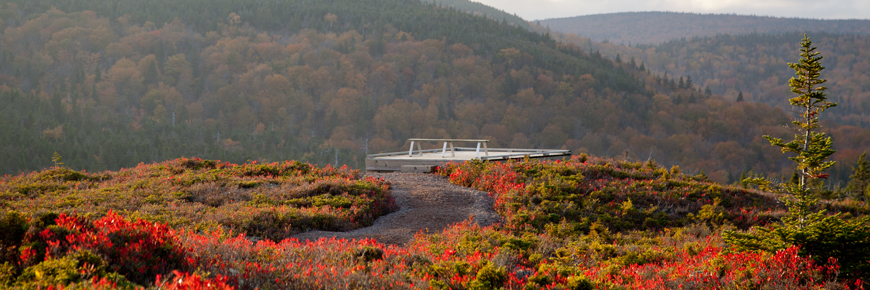
Surficial deposits and soils
Cape Breton Highlands National Park
Most plants need soil to grow and so in a way, soil is the raw material of the food chain. Surficial deposits often contribute to soil formation or eventually develop into soils themselves.
Surficial deposits are basically piles of loose material lying on top of the bedrock. They may include small bits of the bedrock which have fractured off. Within Cape Breton Highlands National Park, most of these deposits were left by glaciers - 60% of the park is covered by glacial till. 20% of the park is covered by deposits left by the weathering of the mountains, 10% of the park is covered by decomposing plant matter, called organic peat, while the rest of the park (7%) is covered by deposits left by rivers and flooding.
Soil formation and development are the products of climate, vegetation, landscape, the nature of the bedrock on which the soil develops, and time. After the retreat of the local ice-cap at the end of the last ice age, soils in Cape Breton Highlands National Park developed from deposits of sand, gravel and silt.
Soils in the park are mostly poor, thin and stony. By far the most common types of soil within the park are podzols, acidic soils which form in softwood forests and cool, humid climates. Other types of soil found in the park include immature rocky soils called regosols, rich hardwood forest soils called brunisols, and soils composed mostly of plant matter or peat, called fibrisols.
All the boreal forest and taiga vegetation in Cape Breton grows in soil consisting of decomposing previous generations of plants - mostly podzols and fibrisols. These thin organic soils are easily stripped away by fire, wind, rain and the trampling action of many moose hooves and human feet.
- Date modified :